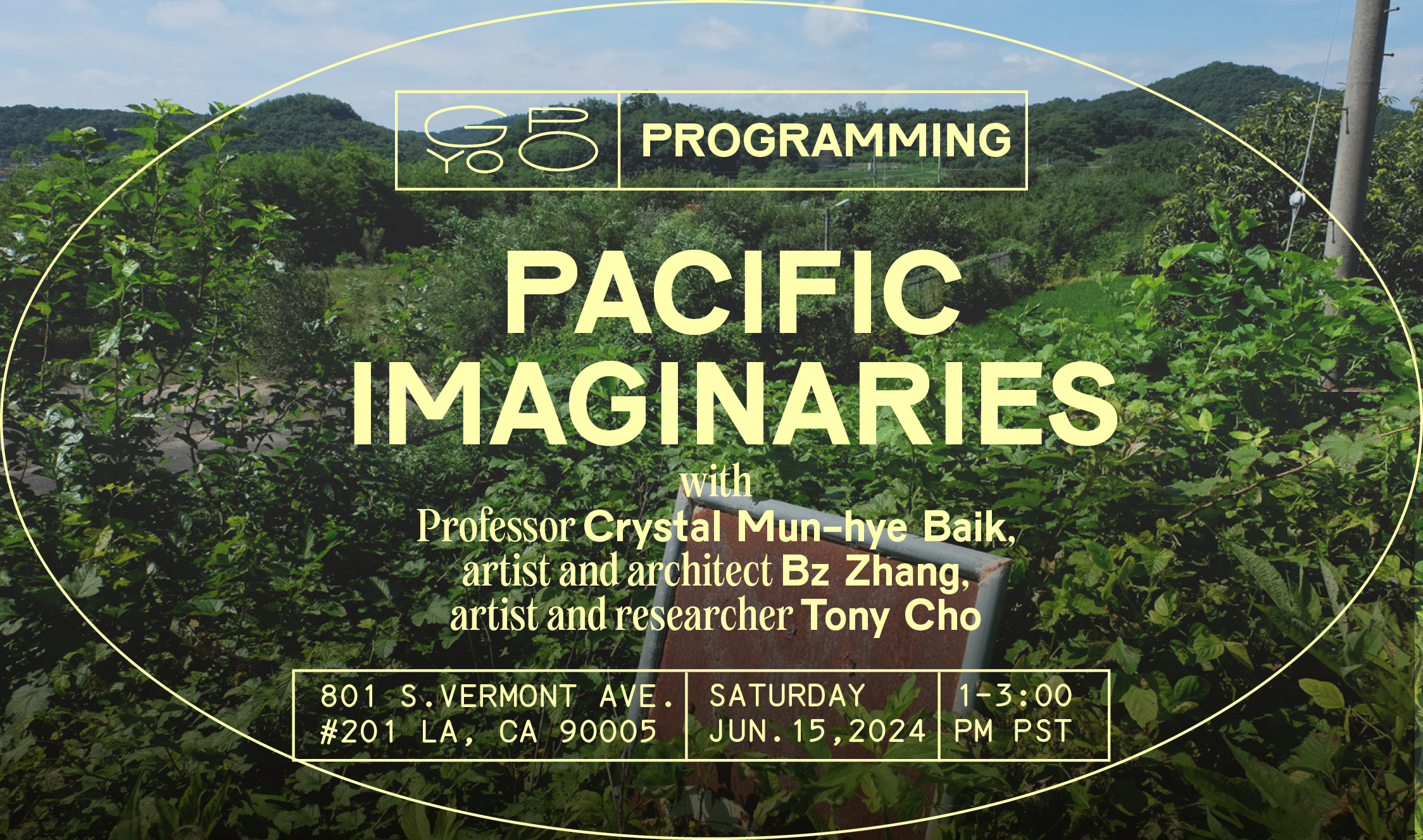Pacific Imaginaries

Artist / Curator Talks
June 15, 2024 | 1:00 pm
Pacific Imaginaries with Professor Crystal Mun-hye Baik, artist and architect Bz Zhang, artist and researcher Tony Cho
Saturday, June 15, 2024
GYOPO
801 S. Vermont Avenue. #210
Los Angeles, CA 90005
1:00 PM – 3:00 PM PST
How do we visualize the Pacific Ocean – through images, symbols, materials, memories, and beyond? Last August, the world’s largest maritime military exercise, the Rim of the Pacific (RIMPAC) announced it was holding a competition to consider submissions for a new logo for its “2024 edition.” The submission solicitation stated, “This is an opportunity for any artist, designer or creative person who would like to see their work featured as the exercise’s official branding for stationary, press releases, websites, social media, coins, shirts, hats, and more. The winner will also be officially recognized by the Commander of the U.S. Third Fleet.”
RIMPAC occurs biennially and will take place again this summer, with the U.S. Pacific Fleet launching from San Diego to join other forces to hold so-called “war games” off the coasts of Hawaiʻi throughout the Pacific Ocean. RIMPAC involves an estimated 25,000 military personnel, alongside 38 warships, and over 170 aircrafts from 28 countries all over the world, including the Republic of Korea and the United States. RIMPAC purports “to promote a free and open Indo-Pacific.” However, military exercises in the Pacific continue to destroy environments and untold scores of marine life that dwell in the ocean, including at least one instance of an Australian destroyer killing a mother fin whale and her calf in San Diego.
RIMPAC is one example of the long history of the U.S.-led militarism, colonialism, and extraction across the Pacific Ocean. U.S. heads of state have also militarized the oceanscape in declaring “America’s Pacific Century” and the “Pivot to Asia.” In asking what it may mean to visualize the Pacific, we question for whom the Indo-Pacific remains “free and open.” We contend with the legacies of militarization in Hawaiʻi, the Marshall Islands, Bikini Atoll, and Guåhan – lands which have often served as what geographer Sasha Davis calls “sacrifice zones,” laboratories, and testbeds for militarized technologies. We also contend with the militarized dispossession and pollution of landscapes of the Pacific rim due to U.S. base sites in the Philippines, Okinawa, and South Korea, including the largest overseas U.S. military base in Pyeongtaek, South Korea.
Yet the Pacific is also a site of active resistance. Generations of peoples have led movements for sovereignty, demilitarization, and rematraition of lands and oceans. What does this enduring legacy mean for gyopo and the peoples and environments of the Pacific and Oceania? How can we visualize, sense, and symbolize the majestic Pacific Ocean in the face of such militarism? How can artists, designers, and creative peoples draw from existing forms of resistance while creating new understandings of our connectivity and resilience?
Join us as we hear from Professor Crystal Mun-hye Baik, artist and architect Bz Zhang, and artist and researcher Tony Cho. Participants will share some of their work during which time they will imagine all attendees to consider anticolonial and liberatory symbolism, imagery, and other modes of visual communication.
Attendees are encouraged to bring their own sketching and drawing supplies. Speakers will encourage folks to engage with their works through their own sketching, drawing, and collage-making processes to imagine for themselves how to visualize the Pacific. GYOPO will provide a limited amount of supplies on site.
ASL interpretation will be provided.
Please be advised that this event will be photographed and filmed and that GYOPO may use such photos and videos in print and online, including in social media. By RSVPing and attending this program, it signifies your consent to be photographed, filmed, and/or otherwise recorded.
M M M M